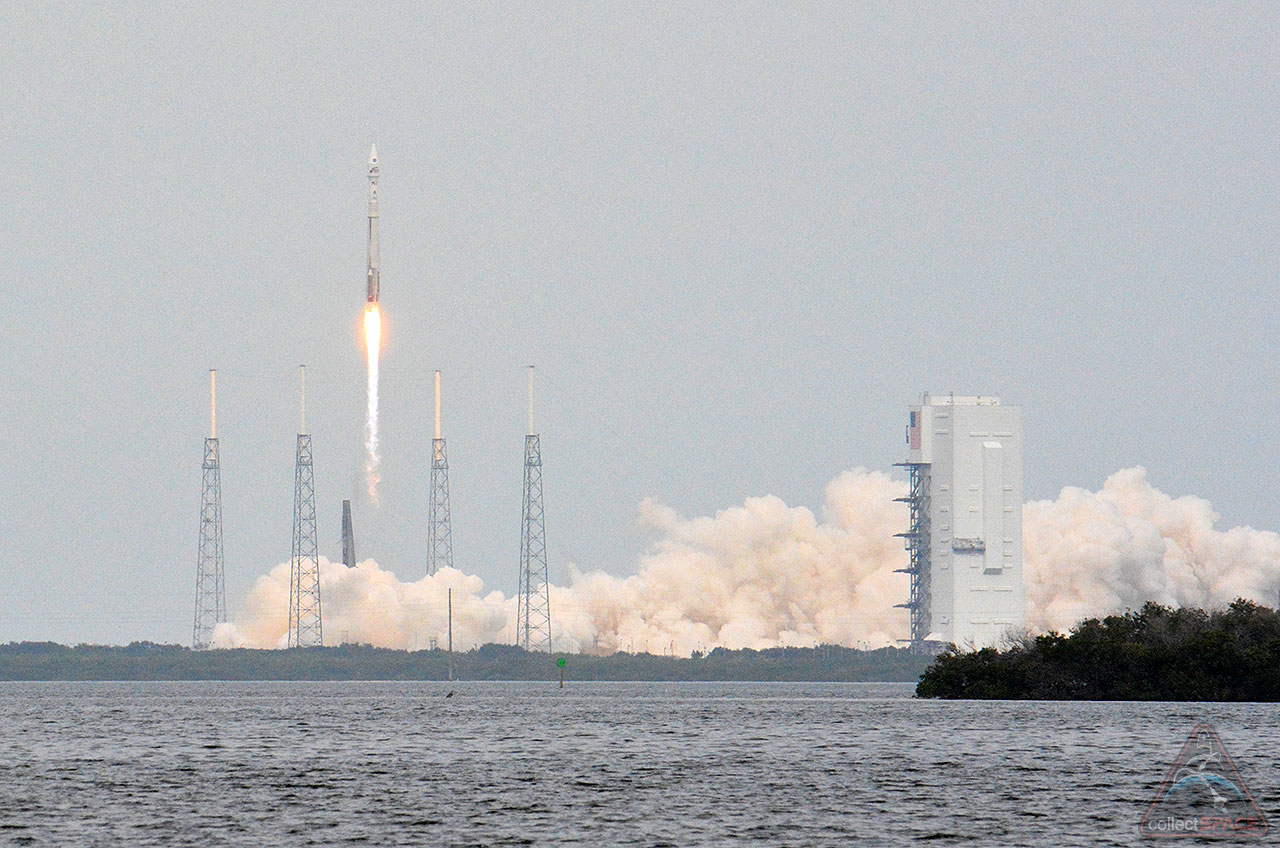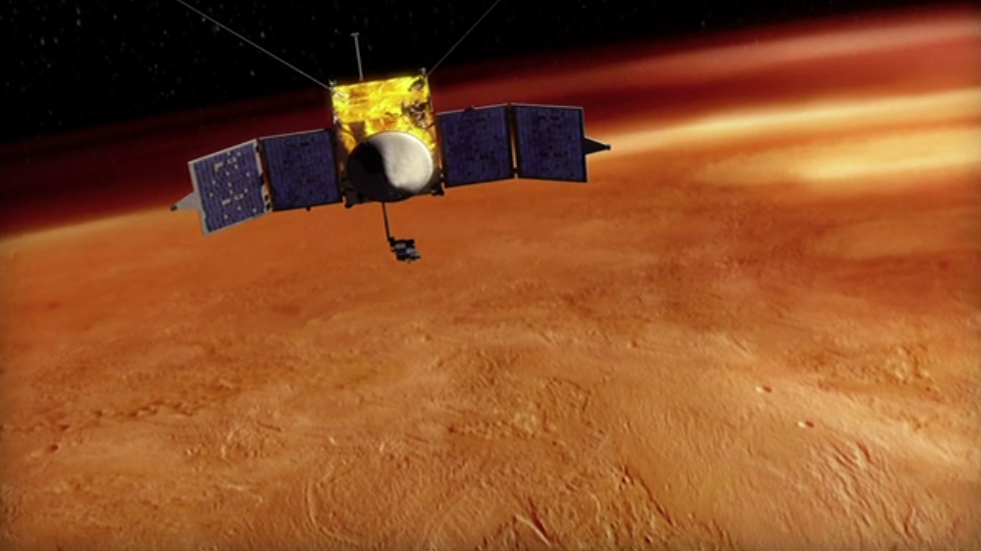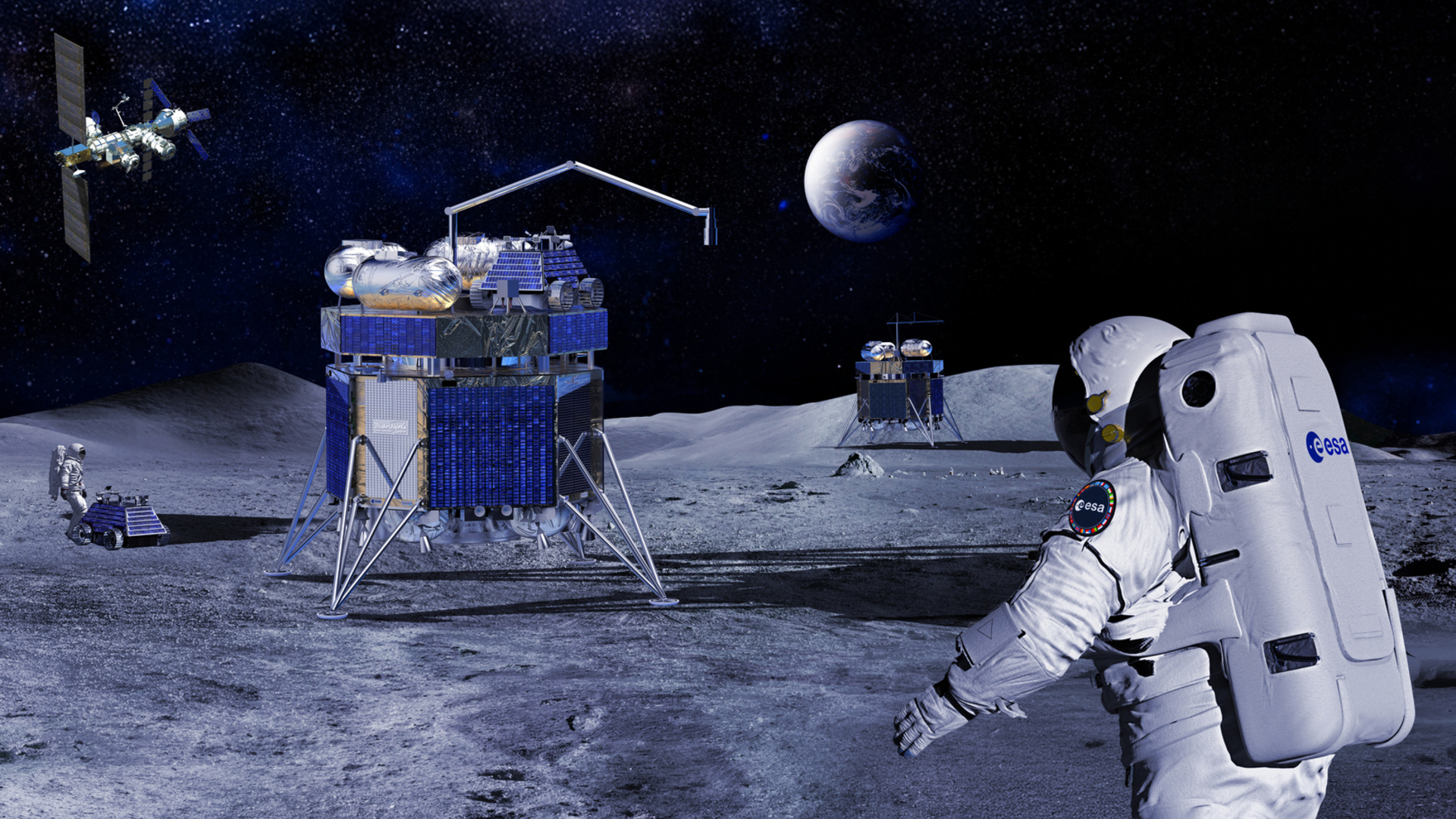NASA Launches Robotic Mars Probe to Investigate Martian Atmosphere Mystery

CAPE CANAVERAL, Fla. — NASA launched its newest Mars probe toward the Red Planet Monday (Nov. 18) on a mission to determine how the Martian atmosphere transformed the world into the desolate wasteland it is today.
The robotic spacecraft, called the Mars Atmosphere and Volatile Evolution probe (MAVEN), launched atop an Atlas 5 rocket from the Cape Canaveral Air Force Station here at 1:28 p.m. EST (1828 GMT), beginning a 10-month journey to Mars.
"Liftoff of the Atlas 5 with MAVEN, looking for clues about the evolution of Mars through its atmosphere," NASA launch commentator George Diller said as the rocket climbed into a cloudy Florida sky. [See photos from MAVEN's launch to Mars]
If all goes well, MAVEN should arrive at Mars on Sept. 22, 2014, mission scientists have said.
A Mars atmosphere mystery
The school-bus-size MAVEN spacecraft is heading to Mars to gather data about how the Martian climate has changed over time. MAVEN will study the planet's upper atmosphere, investigating the solar wind environment and other factors that could have caused the planet to lose its atmosphere to space.
Today, the atmosphere of Mars is only about 1 percent as thick as that of the Earth; however, scientists think that hasn't always been the case. Based on data collected by other Mars orbiters and rovers on the surface, researchers think that Mars was once a wet and warm world with a thick atmosphere.
Breaking space news, the latest updates on rocket launches, skywatching events and more!
The $671 million MAVEN probe is expected to make it into orbit around Mars on Sept. 22, 2014, but before that, the spacecraft might be able to observe a potentially dazzling comet passing through the inner solar system. Comet ISON, set to make its closest pass by the sun at the end of this month, could shine brightly from Earth, but MAVEN's ultraviolet camera could catch sight of the comet as soon as Dec. 10. [NASA's MAVEN Mars Probe: 10 Surprising Facts]
"Many of the same gasses that are present in the Mars atmosphere are also present in comets," Nick Schneider, lead scientist for MAVEN's Imaging Ultraviolet Spectrograph Instrument lead, told the press before launch. "What an ideal opportunity for us to try out our instrument and do some good science along the way … If we have time, we should get some really great observations in the ultraviolet of Comet ISON."
More robots around Mars
NASA's MAVEN isn't the only probe on its way to Mars. On Nov. 5, the Indian space agency launched its first Mars spacecraft— called Mangalyaan — and it is schedule to arrive at the Red Planet two days after MAVEN, on Sept. 24.
MAVEN's team and the Mangalyaan team could eventually help one another with data sharing and observations from the two spacecraft, mission managers said.
"They [the Mangalyaan team] also have a couple of instruments that make relevant measurements to what we're doing and vice versa," Bruce Jakosky, principle investigator for MAVEN, told reporters before launch. "We've agreed that after we're both in orbit taking data, we'll figure out what coordination we'll need."
Once in Mars orbit, the new probe will join NASA's Mars Reconnaissance Orbiter, Mars Odyssey and the European Space Agency's Mars Express, which are actively studying Mars from orbit now. NASA's Mars rover Curiosity and Opportunity rover are studying Mars from the planet's surface as well.
The MAVEN spacecraft also has the capability to act as a relay point between the rovers on Mars and Earth, which the Mars Reconnaissance Orbiter and Mars Odyssey can do as well.
NASA is also planning to send another lander to Mars in 2016. That spacecraft, called InSight, will investigate the way Mars and other rocky planets in the solar system — like Earth — may have formed. The lander will also look into the current seismic environment from the surface of the planet.
Meanwhile, the European Space Agency and Russia plan to launch a new orbiter to Mars in 2016, and follow that with a rover launch in 2018 as part of their ExoMars exploration program.
Visit SPACE.com for the latest MAVEN news, photos and videos. You can also follow MAVEN coverage through the Mission Status Center by SPACE.com's partner, Spaceflight Now.
Follow Miriam Kramer @mirikramer and Google+. Follow us @Spacedotcom, Facebook and Google+. Original article on SPACE.com.

Miriam Kramer joined Space.com as a Staff Writer in December 2012. Since then, she has floated in weightlessness on a zero-gravity flight, felt the pull of 4-Gs in a trainer aircraft and watched rockets soar into space from Florida and Virginia. She also served as Space.com's lead space entertainment reporter, and enjoys all aspects of space news, astronomy and commercial spaceflight. Miriam has also presented space stories during live interviews with Fox News and other TV and radio outlets. She originally hails from Knoxville, Tennessee where she and her family would take trips to dark spots on the outskirts of town to watch meteor showers every year. She loves to travel and one day hopes to see the northern lights in person. Miriam is currently a space reporter with Axios, writing the Axios Space newsletter. You can follow Miriam on Twitter.

